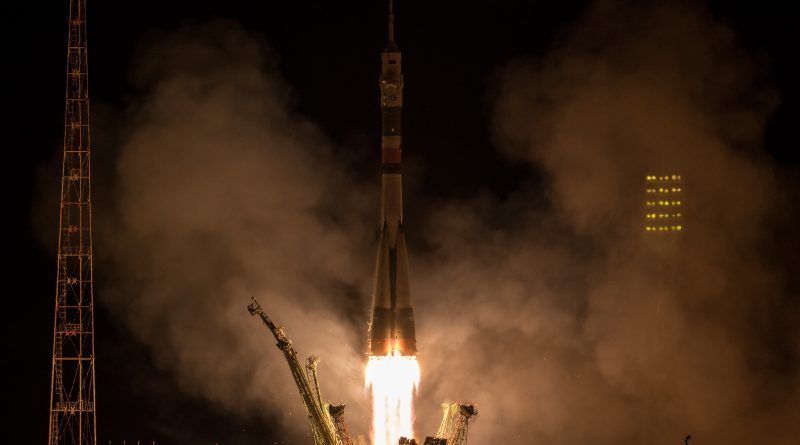Three Crewmen Arrive at International Space Station after Express Soyuz Rendezvous
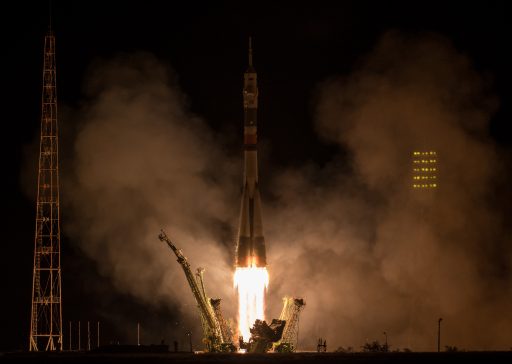
Carrying a crew of three, a Russian Soyuz FG rocket lit up the skies over the Baikonur Cosmodrome Tuesday night as it embarked on a nine-minute climb to orbit in pursuit of the International Space Station to send the Soyuz MS-06 spacecraft on a fast-track rendezvous with the orbiting laboratory with the second half of the Expedition 53 crew.
Soyuz Commander Aleksandr Misurkin and NASA Flight Engineers Mark Vande Hei and Joe Acaba took their seats atop 274 metric tons of explosive rocket propellants after nightfall on Tuesday in anticipation of an early morning liftoff from Baikonur’s historic Site 1/5 that supported the launch of Sputnik 60 years ago and Yuri Gagarin’s milestone mission in 1961. The 49.5-meter tall rocket took flight at 21:17:02 UTC, firing off under the power of its four liquid-fueled boosters and large core stage to begin a chase of the Space Station that passed directly over the launch pad two minutes before blastoff.
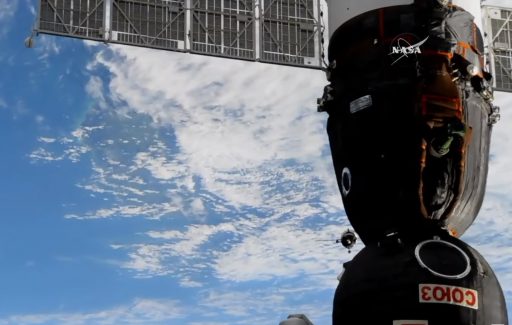
Thundering uphill with a thrust of 422 metric-ton-force, Soyuz turned to the north-east headed toward the Russian-Kazakh border to deploy the 7,200-Kilogram spacecraft into the orbital plane of ISS. The four boosters dropped away two minutes into the flight and Soyuz shed its protective payload shroud two and a half minutes after launch when crossing the boundary of space. The core stage handed off to the Block I third stage just shy of five minutes into the flight for the final push into orbit with Soyuz MS-06 sailing off eight minutes and 48 seconds after launch.
As Soyuz FG checked off its 61st successful mission, Soyuz MS-06 and its U.S.-Russian crew trio did not get much of a break as they entered the four-orbit, six-hour rendezvous procedure designed to bring crews to their destination in space much faster than the conventional two-day flight profile. Following a series of orbit-raising maneuvers completed on its first two laps around Earth, Soyuz switched to its automatic navigation system to reach the vicinity of ISS for a flyaround maneuver and straight-in approach for docking at 2:55 UTC on Wednesday – marking the fastest Soyuz rendezvous in ISS history.
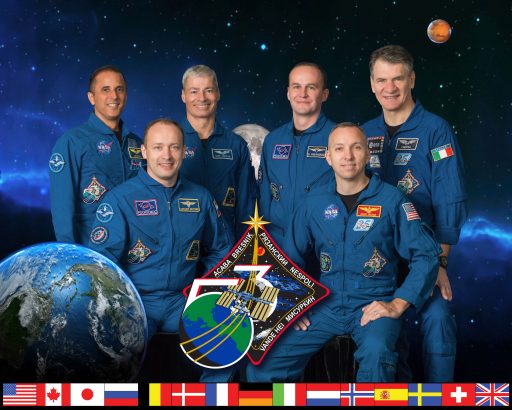
Aboard the International Space Station, the Soyuz MS-06 crew is eagerly awaited by the first half of the Expedition 53 crew led by Commander Randy Bresnik who celebrated his 50th birthday on Monday and Flight Engineers Sergey Ryazanskiy and Paolo Nespoli.
As a combined crew of six, Expedition 53 is looking forward to five visiting vehicle moves on the Russian and U.S. side as well as up to three planned spacewalks in October & November for maintenance on the Space Station’s robotic servicing arm.
The crew of Soyuz MS-05 will depart on December 14 followed by the launch of Soyuz MS-07 just three days later as ISS transitions to Expedition 54 which will see three new vehicles arrive at ISS and a Russian spacewalk before the Soyuz MS-06 crew departs the Station to close out a 167-day space flight on February 27, 2018.
The majority of the crew’s time onboard ISS will be dedicated to scientific experiments with over 250 studies in progress during their tenure.
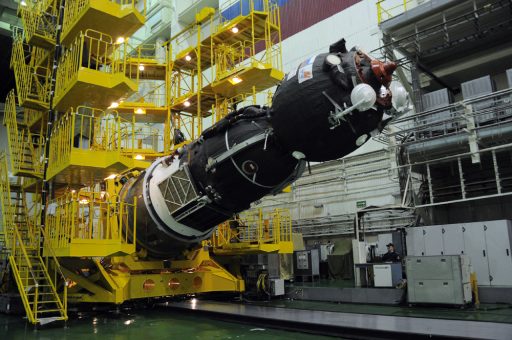
The addition of a fourth crew member on the U.S. Segment – enabled by the reduction of Russia’s ISS crew to two members – will nearly double the time dedicated to science on the U.S. Segment as maintenance requirements do not increase by much with four crew on the USOS which allows the fourth pair of hands to be almost entirely dedicated to science.
Tuesday’s launch comes in a busy time with the most recent crewed Soyuz leaving the pad on July 28, the landing of Soyuz MS-04 on September 3rd and the launch of a Proton rocket from Baikonur just 26 hours before the Soyuz MS-06 liftoff. However, human spaceflight operations have become a well-oiled machine at the world’s oldest space port after over five decades of launching crews into orbit aboard R7-derived launch vehicles.
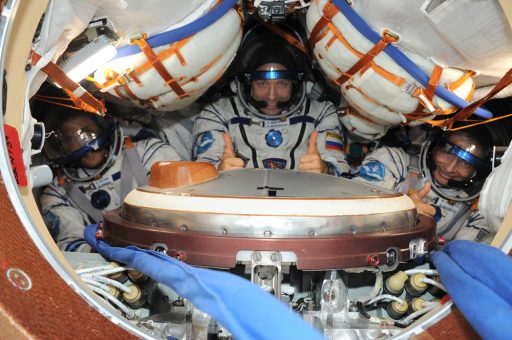
Soyuz MS-06 – flying under the call sign Altair – is commanded by Aleksandr Misurkin, a second-time space flier and first-time Soyuz commander with 166 days logged off the planet on one previous long-duration flight to ISS. Misurkin served in the Russian Air Force as a pilot instructor before being selected as Cosmonaut in 2006, flying for the first time in 2013 aboard Soyuz TMA-08M and spending over five months on ISS as part of Expedition 35/36. During his mission, he completed three EVAs for a total of 20 hours.
The Soyuz ‘left seater’ – considered the co-pilot position – is NASA’s Mark Vande Hei, embarking on his first space flight. Vande Hei served in the U.S. Army’s Space Battalion, providing operational support in combat operations in Iraq, before transitioning to NASA’s Johnson Space Center where he worked as a Capcom for the Shuttle and ISS Programs. He was selected as Astronaut in 2009 and was initially assigned to Expedition 51/52 before crews were shuffled late last year due to Russia’s decision to reduce its permanent ISS crew.
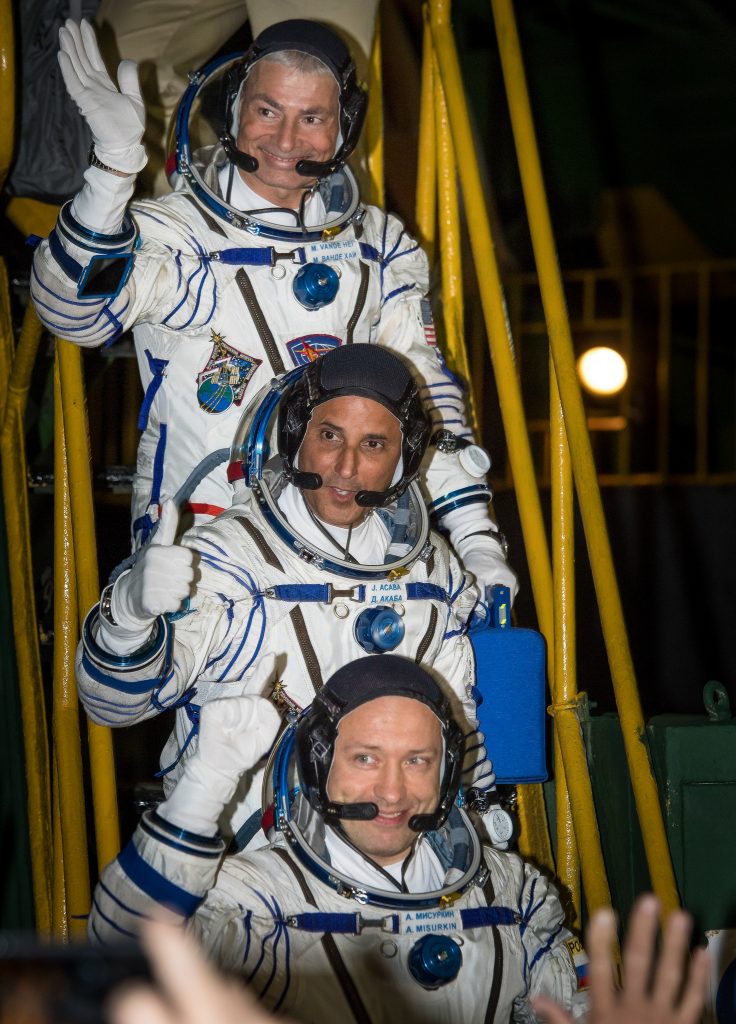
Joe Acaba was added to the crew on short notice as NASA takes advantage of the empty Soyuz seats that would have been occupied by Russian Cosmonauts. He only had half a year of training for his mission, dipping into plenty of experience gathered on his first mission to ISS as part of Expedition 31/32 to get ready for another long-duration flight in record time. A trained hydro geologist, Acaba first flew into Space in 2009 aboard Space Shuttle Discovery on a 12-day mission and again in 2012, spending a total of 137 days off the planet.
The crew’s long launch day / flight day #1 started around 7 p.m. local time when they were awoken from a mid-day nap ahead of a day of nearly 24 hours, starting with a shower at the Cosmonaut Hotel and ending with them in their sleep stations aboard ISS. After the usual routine of all-body disinfection/sampling and dinner at the hotel, the crew received the traditional pre-flight blessing before heading to the Cosmodrome at L-6 hours. At Baikonur’s Site 254, the crew put on their Sokol Launch and Entry Suits and had a final face-to-face conversation with their families and friends before departing for Site 1/5 at T-3 hours.
At the launch pad, the trusted Soyuz FG rocket entered countdown operations at T-8 hours with power-up and a series of checkouts and fueling preparations.
The go-ahead for the propellant loading operation was given by the Russian State Commission after their final pre-launch meeting. Beginning at T-5 hours, the Soyuz launcher received 274,140 Kilograms of Kerosene and -183°C Liquid Oxygen propellants plus Nitrogen to act as pressurization gas in flight; engineers loaded the boosters & core stage with Hydrogen Peroxide at T-3 hours and 30 minutes to drive the engine turbopumps.
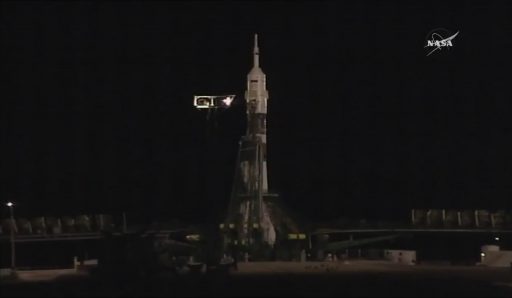
Arriving at the pad two and a half hours before the opening of the ten-second launch window, the three crew members looked at their venting Soyuz rocket that stood fully fueled at that point. The trio waved good bye from the Service Structure before riding the elevator up to the Spacecraft to enter their seats inside the confined space of the Entry Module with Misurkin in the center, flanked to the left by Vande Hei and Acaba to the right. With all hatches closed, Soyuz entered a period of pressure checks while the crew spent around an hour with the pre-launch checklist – setting up the flight control system for flight and making a final leak check on their Sokol suits.
Standing under clear skies, Soyuz was revealed 40 minutes ahead of liftoff when the Service Structure halves opened up and retracted to their launch position, clearing the way for the 305-metric ton rocket. Soyuz MS-06 went on internal power and the final roll call by all launch support stations gave a GO for the Automated Countdown Sequence, picking up six minutes ahead of liftoff. As relic of the ICBM heritage of Soyuz, the launch key was inserted to authorize the firing of the rocket after completing its final setup steps, notably the pressurization of tanks, the transition to onboard control and the purge of the engines to ensure a clean ignition.
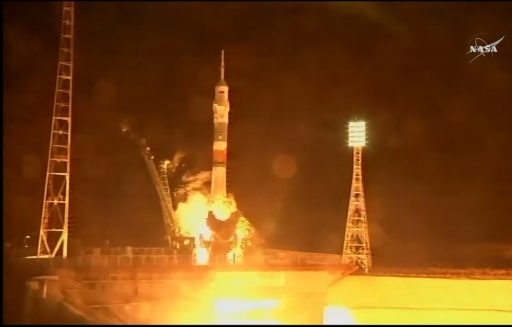
Soyuz switched to battery power and assumed control of the countdown at T-1 minute as the upper stage umbilical mast retracted from the launch vehicle. The launch command at T-20 seconds initiated the spin-up of turbopumps and igniters fired to allow the RD-107A booster engines and the RD-108A on the core to ramp up to liftoff thrust.
Flames erupted from the business end of the rocket as the engines soared up to a thrust of 4,146 Kilonewtons, overcoming counterweights to lift off the ground.
Soyuz FG lifted off at precisely 21:17:02.407 UTC, balancing in a vertical posture for the first twenty seconds of flight, rising into a chilly night over the storied Baikonur Cosmodrome.
With over 1,800 missions under its belt, Soyuz is unmatched for its flight heritage and reliability – having played a major role in human spaceflight since the dawn of the space age. Based on the R7 design by Sergei Korolev, Soyuz has supported crewed missions, cargo flights and satellite deliveries over a remarkable career of five decades.
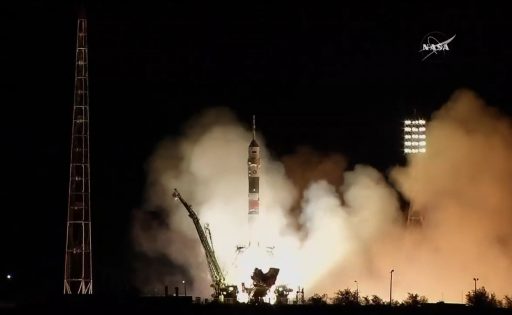
Quickly climbing away from Baikonur, Soyuz pitched over to attain a north-easterly heading toward the Russian border, the standard departure route for crews headed to the International Space Station. Burning 1,600 Kilograms of propellant every second of powered flight, Soyuz passed the speed of sound and encountered Maximum Dynamic Pressure just over one minute after liftoff. By T+95 seconds, Soyuz had shed half its liftoff weight.
The Launch Escape Tower was jettisoned at T+1 minute and 54 seconds followed four seconds later by the separation of the four strap-on boosters that had helped accelerate Soyuz to a speed of 1.5 Kilometers per second. Being pushed outward from the still-firing core stage 50 Kilometers in altitude, the 19.6-meter long boosters put on an impressive display of the Korolev Cross – only visible for a split second in a clear night when the empty boosters rotate away from the central core.
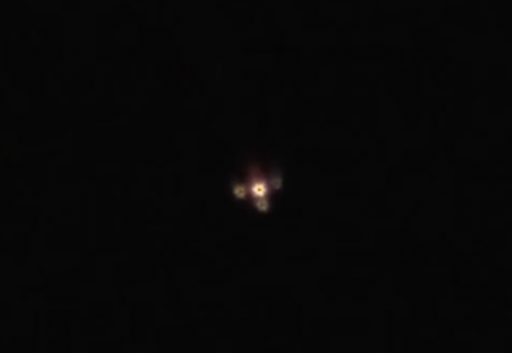
With the boosters headed toward impact 350 Kilometers from the launch pad, Soyuz continued pushing toward space solely powered by the Core Stage, generating 102 metric-ton-force of thrust when flying through the rarefied upper atmosphere. Two minutes and 36 seconds into the flight, Soyuz dropped the launch shroud as it crossed 85 Kilometers in altitude where aerodynamic forces could no longer harm the spacecraft.
In-cabin cameras showed the familiar jolt at T+4 minutes and 45 seconds when the Block A core stage shut down its engines, catapulting the crew forward. Two seconds later, the RD-0110-powered Block I stage was commanded to ignite and separation pyros fired to jettison the 27.8-meter long core that burned 91 tonnes of propellants to lift Soyuz to an altitude of 160 Kilometers, accelerating it to a speed of 3.7 Kilometers per second.
Soaring to a thrust of 30,400-Kilogram-force, the third stage dropped its aft section covers and fired for three minutes and 58 seconds to provide the final push into orbit – aiming for the standard 200 by 242-Kilometer insertion orbit, inclined 51.66 degrees and trailing the Space Station by some 3,500 Kilometers.
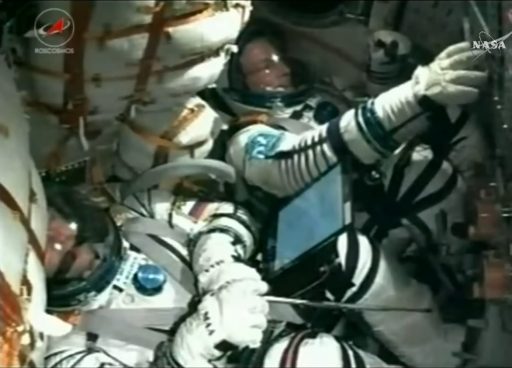
The force of raw rocket power transitioned to the sensation of Zero-Gravity in an instant as the RD-0110 engine was shut down – the crew’s arrival in orbit was signaled by a scale replica of Sputnik that served as the Zero-G indicator for this mission, made from materials used on the Soviet Buran space shuttle.
Soyuz sailed off eight minutes and 48 seconds after launch, deploying both of its solar arrays and all KURS navigation antennas to begin its fast rendezvous, also pressurizing its Unified Propulsion System. Per the four-orbit rendezvous design, Soyuz MS-06 executed a pair of pre-programmed orbit-raising maneuvers, firing its 300-Kilogram-force SKD propulsion system to raise its orbit by around 80 Kilometers to begin the climb up toward ISS. Another two burns, completed on Orbit #2, moved Soyuz ever closer to the Station’s 401 by 407-Kilometer orbit and positioned it correctly for the Automated Rendezvous Sequence.
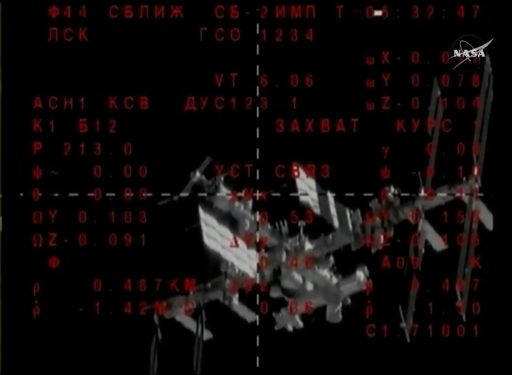
The Automated Rendezvous, programmed to start around 1:07 UTC, began with DV-5 – a final ground-targeted burn that moved Soyuz into the 200-Kilometer communications zone around ISS where the spacecraft powered up its KURS-NA radio navigation system in unison with the Station’s KURS system to begin the relative navigation phase of the rendezvous.
A series of rendezvous impulses maneuvered Soyuz into the direct vicinity of the Space Station, completing a verification of the KURS system along the way before making three braking burns to set up for the flyaround.
At a distance of 400 meters, Soyuz entered a short lap around the orbiting complex to line up with the Poisk module that was vacated not two weeks ago by the Soyuz MS-04 spacecraft. Lined up with Poisk at a distance of 180 meters, Soyuz was commanded to head into a straight-in approach at gentle speed, using its DPO thrusters to keep its cross hairs perfectly aligned with the docking target.
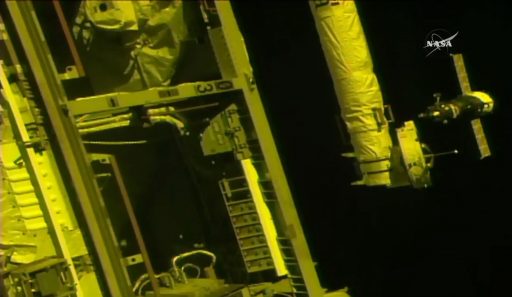
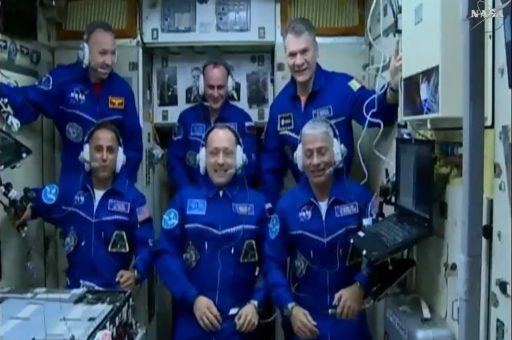
Contact and Capture was confirmed at 2:55:15 UTC when Soyuz made contact with the docking cone on Poisk and pushed in with its translational thrusters to ensure capture latches engaged to establish a soft mate. Within ten minutes of docking, the Docking Probe was fully retracted and hooks closed to form a hard mate for the craft’s five-and-a-half month stay at ISS.
The successful docking capped a five-hour, 38-minute and 13-second transit from the Kazakh steppe to the crew’s orbital destination – marking the fastest Soyuz rendezvous in ISS history with Soyuz TMA-09M a close second with five hours and 39 minutes. After the hard mate was established, the crew pressed into the standard hour-long leak check to verify the integrity of hatches while getting a chance to change into more comfortable clothing from their Sokol launch and entry suits.
Hatch opening at 5:08 UTC on Wednesday united the Expedition 53 crew in orbit for three months of joint operations. The six crew members moved into the Zvezda Service Module for the traditional family conference immediately after hatch opening before pressing into the usual steps of deactivating their Soyuz and going through safety briefings before a long day will wind down for the crew.

